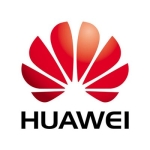
Dell PowerMax Valuable Features
The most important feature or function in Dell PowerMax is the capacity to deliver the required IOPS. Before moving to Dell PowerMax, we did a lot of testing. It was great in terms of delivering the required IOPS. At this moment, the systems are in production, and they're delivering the IOPS we wanted them to without sweating too much. We are getting optimum performance.
Data reduction is one of the strongest features of Dell PowerMax.
The snapshot capability is also impressive, with support for up to 65 million snapshots.
For AI-driven insights, automation, and advanced workloads, Dell PowerMax excels with its scale-out architecture, which allows independent scaling of capacity and performance.
The solution runs on Dell PowerMaxOS 10, which uses advanced algorithms for intelligent data placement, caching, and real-time optimization. This ensures hot data is served quickly and efficiently, enabling instant access with minimal latency.
PowerMax also provides end-to-end security and agility across environments—whether in a multi-tenant setup, on-premises data center, or cloud deployment—while delivering optimal performance for mission-critical databases, AI, ML, and analytics workloads.
It is a fantastic Dell EMC product ever competing with all the vendors. It stands out in terms of performance. You can ask for mission-critical application workloads.
The Dell PowerMax family is evolving with new NVMe technology. Data is written through the cache before being written to the disks. NVMe provides additional fast cache, similar to random access memory (RAM), which improves overall system performance and read/write experience for users.
The system features dense DAEs (Disk Array Enclosures), allowing for multiple petabytes in one storage unit. It accommodates bigger capacity drives within a single storage system, providing a smaller footprint with larger capacity.
View full review »Buyer's Guide
Dell PowerMax
September 2025
Learn what your peers think about Dell PowerMax. Get advice and tips from experienced pros sharing their opinions. Updated: September 2025.
867,445 professionals have used our research since 2012.
The features of Dell PowerMax that I find most useful include reliability, support, uptime as well as flexibility and expandability.
The key benefits of using Dell PowerMax, quantified in terms of saved hours and saved costs, is having one single platform that provides functionality to all of our internal customers, which is not only easier to manage and cheaper to manage but also is easier to explain to management when they have to keep an eye on one ball at a time; the scalability and expandability offered on one platform is a lot easier to express and plan for.
In terms of uptime, Dell PowerMax is pretty much 100%.
View full review »The features I find most valuable about Dell PowerMax are its stability and flexibility; we shift workloads a substantial amount, and it's easy to use.
The most useful feature of Dell PowerMax NVMe for me right now is its ease of management with the API functionality, which allows for automatic provisioning from anywhere, even without using the storage itself.
It can be API integrated to any system.
Its performance offers the highest capability. They have very, very, very good performance.
Application users can also take snapshots for provisioning, and it can be integrated with any system. Another important aspect is its performance and IOPS capability, which is very good concerning reads, writes, and IOPS.
Dell PowerMax NVMe is very supportive of our operational growth since we require daily performance from our core banking systems and need to facilitate data movement efficiently.
View full review »I am working with Dell infrastructure, next generation infrastructure, which is the latest infrastructure of the solutions, and the EMC features of Dell storage.
Dell PowerMax NVMe is high-end, mission-critical storage, so there is complete responsibility for the storage availability as they are running critical business applications.
The most valuable feature of Dell PowerMax is the resource FICON. We can connect the Mainframe in this storage. The benefits of Dell PowerMax are that we can use the older environment.
View full review »The most valuable feature of Dell PowerMax is its reliability. There are more traits that are really important to us, such as requiring very little management time. It is really 'set it and forget it' because it is really easy to manage, at least now it is. In the past, it used to be more difficult, but now it is really easy. It is always there; it is just 'set it and forget it'.
View full review »RG
Rocco Guerriero
Chief Executive Officer at Contour Data Solutions
The most valuable feature of Dell PowerMax, in my opinion, is its uptime. The benefit to my partner's organization using Dell PowerMax is mainly reliability; we have it deployed in an active-active configuration using SRDF, with VMware as the hypervisor, designed to handle component failure, site failure, and it works as advertised.
View full review »A valuable feature of PowerMax is its ability to encapsulate storage, such as storage virtualization. This capability is particularly useful when it is necessary to migrate data from one storage to another without downtime.
Additionally, the NVMe technology improves input/output performance. This makes it a valuable asset for our organization's storage solutions.
View full review »MA
Mohamed Abdel Salam
Senior Sells at Enterprise Sigma Technology
The upgradability and extendibility for the size of the storage unit are noteworthy. When discussing PowerStore or PowerMax, the primary point I mention is that they use all-flash storage. This means that with more concurrent sessions on my device, we need to discuss input and output per second, which I use. PowerStore is the best solution for me in these terms.
View full review »The most valuable features of the solution are its compression ratio, performance, desk support, seamless configuration, the software's native migration, the NDM, and open replicators, which are very good advantages of the tool I experienced during the projects I implemented.
View full review »The solution is easy to use with applications that are user-friendly. It also offers ease of accessibility.
View full review »The solution's most valuable feature is the data reduction ratio. You can store a 5:1 ratio of your data in Dell PowerMax NVMe. For example, if you have 200 terabytes of usable capacity, you can save up to five times of data on that capacity. That means you can save one petabyte of data on just 200 terabytes of usable capacity.
The solution's end-to-end NVMe capabilities have improved our operations. Everything is fast, and you don't have to map your storage to old hybrid storage technologies. Our organization has experienced positive change, and the solution has improved our uptime, availability, performance, and capacity.
KM
Kamel Malti
Analyste De Systèmes Informatiques at a comms service provider with 5,001-10,000 employees
First, it's an enterprise storage solution. This is very important for us.
Another important feature is replication.
However, many features are common across vendors such as Hitachi. Whether it's replication and encryption, we find the same features with IBM or Hitachi. There are minor differences, but not significant.
Replication is important because we replicate some data. Encryption is also crucial. Additionally, data reduction is vital. The more the storage can reduce data volume, the lower the cost.
Good documentation is important. We currently have a lot of documentation from Dell.
View full review »AF
Antony Fernando
Solution manager at Al sundus
If you ask me, technically, the tool is the same as most of the vendors have the same thing. If you ask me about Huawei, I can tell you about the tool's many features.
Dell PowerMax NVMe's advantage is just the support.
The main feature that we are looking into for some storage is the DDoS features as well as transparent failover and failback in terms of high availability. That's the main topic that we're dealing with with these systems, but at our customer sites.
Besides reliability and so on and serviceability also in different countries.
View full review »The SRDF site-to-site replication for the volumes is the most important feature for us. That enables us to do site recovery and replication for our VMware infrastructure.
Along with that, the NVMe response time is very good. We used to have a VMAX 20K but we have just upgraded, and moved two or three generations ahead to PowerMax, and the response time is great. Because we are coming from a hybrid storage scenario, the performance of NVMe is a huge upgrade for us. The 0.4 millisecond response time means our application works great and we are seeing huge performance improvements in our VMware and physical environments.
Regarding data security, EMC has introduced CloudIQ solution with the PowerMax environment, and that enables live monitoring of the telemetry and security data array of the PowerMax. CloudIQ also has a feature called Cybersecurity. That monitors for security vulnerabilities or security events that are occurring on the array itself. That feature is very helpful. We have been able to do some vulnerability assessment tests on the array, which have helped us to resolve issues regarding data security and security vulnerabilities. We are not using the encryption feature of the PowerMax, because we didn't order the PowerMax configuration for it.
CloudIQ helps the environment and lets us manage the respective connected environments. A good feature in CloudIQ is the health score of each connected infrastructure. It gives you timely alerts and informs you when a health issue is occurring on the arrays and needs to be fixed. Those reports and health notices are also sent to Dell EMC support, which proactively monitors all the infrastructure and they will open service requests themselves.
In terms of efficiency, the compression we are currently receiving is 4.2x, which is very good efficiency. We are storing 435 terabytes of data in just 90 TB. In addition to what I mentioned about the NVMe performance, which is very good, we were achieving 150k IOPS on the VMAX, but on the PowerMax the same workload is hitting 300k-plus IOPS. That is sufficient for the workload and means the application is performing as required, according to the SLAs as defined on the PowerMax.
When it comes to workload congestion protection, we have not faced any congestion yet in our environment. We have some spikes on Friday evenings, but they are being handled by PowerMax dutifully. It can beautifully handle up to 400k IOPS, even though it is only designed for 300k IOPS. That is another illustration of its good performance.
View full review »Dell PowerMax NVMe has been a significant enhancement for data handling in my industry. Its improved security features and data calculation capabilities make it a valuable solution for our customers. The most critical feature of Dell PowerMax NVMe for performance enhancement is its strong network support and integration with other vendors, along with its efficient use of hardware components like CPU and memory. Data reduction technologies in PowerMax have been highly beneficial for our company, allowing us to optimize storage and reduce costs by consolidating files
View full review »
The speed and the compatible interface with IBM are the most valuable features of the PowerMax product.
View full review »VV
Vince Vitro
Sr Solutions Architect at a healthcare company with 1,001-5,000 employees
They're basically tanks. You could take a baseball bat to it, and it's still going to keep running and doing what it's supposed to do. We've had a couple of part failures, and you can pretty much replace any part on that thing at any time during the day in the middle of production without worrying about anything happening. Nobody notices. We even had to replace a memory card, so we had to take out a controller. There were two, so no one even realized what was going on.
The availability is excellent. You can do anything to it, and it still runs. The uptime is a great feature, and the replication has been pretty solid. That's another important feature for us.
VS
VijayShankar
Senior Administrator/IT Systems & Cloud Operations at Etisalat
The most valuable feature of Dell PowerMax NVMe is its replication feature. The replication was configured directly on the array, and we didn't need any separate replication switch.
Dell PowerMax NVMe will have one administration login for DBA. So if you log in, the DBA can see the performance of the database in the storage area level. I have not seen this feature in any other storage vendors.
I am impressed with the tool's reliability since we see a few hardware failures with it. Also, the solution's replication configuration is good.
View full review »The most important feature is the performance, because we have four directors, all of them Active-Active. (PowerMax directors support multiple functions including front-end I/O modules).
It is highly available because it has multiple controllers. All of them are unlike some of the traditional storage arrays, where you assign certain LUNs to certain controllers. Here, everything is Active-Active. You don't assign a particular disk or LUN to a particular controller. All the controllers are servicing all of the LUNs. So from an availability point of view, we don't even know if a particular controller or director has failed. And all the spare part replacement, including controllers, can be done online while systems are working. We don't need to do it during off-peak hours. We can do so during normal working hours because the performance you get from the service, due to the other controllers, is enough to take care of any failed components.
There is also a Call Home facility configured, so the system can send out alerts to the Dell EMC support team. They can dispatch spare parts based on these alerts, so it is a fully integrated system.
Another valuable feature is the DR replication technology, which is based on the Dell EMC SRDF solution. It provides a very good level of near-real-time replication. It supports synchronous as well as asynchronous. When it comes to activating the DR, it is very easy.
Then there are the compression and deduplication which are always on. We get more than 4:1 capacity savings using them. The efficiency benefits from compression and deduplication are through a specialized hardware module within the storage itself, and that means there is no overhead to the compression and dedupe.
In addition, the solution supports IBM Power Systems, Solaris, VMware—almost everything is supported. That's important to us because we are using multiple hardware flavors including IBM Power Systems, SPARC machines, and HPE Onyx. All of these are different classes of machines, and we have different operating systems. We have Linux and Windows on physical and we have it running on VMware. Oracle virtualization is also supported. It supports a wide combination of specialized technologies and hardware.
And the built-in QoS capabilities enable you to drill down to any particular QoS levels and define the type of performance you'll have: diamond, platinum, or gold. The result is that different performance levels can be set for individual disks. Using the QoS functionality, we can vary the performance or prioritize it based on the criticality of the performance needs.
Another nice feature is the CloudIQ app. You can even monitor things using the app on your mobile. Every five minutes, the performance statistics and the system diagnosis data are sent to the cloud and you can access them sitting anywhere. You get these statistics at your fingertips.
OO
Oluwatosin Obatoyinbo
Enterprise Architect at a financial services firm with 1,001-5,000 employees
We find the service level option to provision storage very valuable. The ability to define different service levels for storage groups helps us in prioritizing our workload at the infrastructure level.
We also find the compression technology of PowerMax very valuable. In some instances, depending on the kind of data that we have, we can attest to compression ratios of about 9:1, which is very valuable.
The NFS feature is also quite useful for us in our environment. We're able to deploy the NFS capabilities to resolve some of the use cases that we identify.
Its efficiency and performance have been remarkable. It could be because we've not been able to break the limits of what we have. The PowerMax 2000 that we have can do about a million IOPS or so if my memory serves me well. Our use case at the moment isn't stretching as much as that. So, for us, performance has been remarkable in terms of meeting expectations. It has been much better as compared to what we used to have. We see responses to application requests, especially database request queries, in microseconds, as advertised, and even that in some ways gave us a bit of a challenge because the applications couldn't cope with the speed of the response of the storage. So, it was new learning for the providers of the application. The performance has been remarkable. We've seen data within microseconds as advertised. In terms of the IOPS, we've not been able to fully exact the limits, but so far, so good. We are pretty comfortable with that. As we grow organically, we will see more performance and we will be able to drive, but in terms of compression and deduplication, we have received remarkable value.
In the last one year, we haven't had any issues with the availability of the platform, the storage, and the extension of our data. The encryption or data address feature is also there. Even though we've not fully utilized that, it's comforting to know that capability is available for us to explore. We've not had any storage level outage in terms of the data not being accessible within the agreed service. So far, so good.
View full review »I have been highly satisfied with the resiliency and scalability of the solution.
View full review »MA
MuhammadAli3
Director - Products & Solutions at Advanced Electronics Company
I like the operability and easy scalability of this product. It's also easy to integrate with all of our systems. It has high speed and a good name in the market. The accounting is good, easy, be accessible.
View full review »We are most interested in cloud utilization.
View full review »MG
Martin Gonzalez
Solution Administrator at Telcel
It is important that the product provides NVMe scale-out capabilities. We support many things with the product and we need to know what the architecture is. It makes things very simple for us.
The data security and availability are pretty good. We have many clients connecting to the box, which means security is very important. This is true when it comes to remote support. The compliance is very good.
The performance is very good on our servers. It's superior. And the QoS capabilities for providing work congestion protection are also important because about 99 percent of our servers are production servers.
View full review »PC
Paul Croteau
Senior Solution Architect at Rackspace
We use the solution's CloudIQ features for what we call fleet management. We manage hundreds of devices. We use this to make sure that all our arrays are properly communicating so we can see performance, storage capacities, etc. We can also generate reports on usage and performance. Our customers with dedicated solutions rely on CloudIQ for reports, but we also have a lot of homegrown internal tools which give us the same features so we don't use it as much as our customers, but we use it occasionally.
CloudIQ is definitely helpful for our customers who use it, but our teams are using internal tools that we've trusted for years. CloudIQ is very helpful for helping to manage storage for customers who need the tools but don't have their own.
In regards to efficiency and performance, we don't have escalations to the vendor at all because it works so well. These devices are a beast. Historically, before the PowerMax came out, we would sometimes experience storage performance bottlenecks because there were a lot of customers in the shared or multi-tenant environment. So, we have a lot of customers requesting a lot of data. We do things at an enterprise-level at scale. Therefore, we would see performance bottlenecks. The efficiency of the system has now just proven that it works phenomenally. It can allocate resources to different storage tiers, like a Gold, Silver, or Bronze tier. If Gold is busy, it can go and request resources from the Silver or Bronze layer as we have defined them. We no longer see performance issues because the system just runs really well and handles a lot of scaling in both directions.
There is an underlying QoS-type functionality behind-the-scenes where we are providing storage with an SLA based on tiers (Gold, Silver, or Bronze tiers). For example, if the Gold tier does not hit its minimum required performance, the system will kick into a lesser quality of service. It will reach out to the other storage tiers and consume more bandwidth, if needed. However, in our experience, the system works so well that we don't actually have to use that feature. On the very rare occasions that we need to, we just go click a button in the background. The system works so well that we don't actually have to use the QoS capabilities.
It works great. We don't ever have to escalate to the vendor. PowerMax is really a game changer for us. Historically, we would have bottlenecks on older, spinning disk gear, but this NVMe technology is really solid. Now, it works phenomenally. Therefore, storage is not a problem for us. The performance that we are experiencing changes the customer's conversation from talking about I/O to response times or latency. We used to have to worry about disk and how quickly could your data go in and out. Now, things are so dang fast that we just want to know how quickly we can connect to it, so the latency is pretty cool. We don't have any issues with performance efficiency at all.
View full review »The product is very fast and reliable. It's certified for several scenarios. It is easy to handle. The UI is good.
View full review »Dell PowerMax NVMe has good scalability and performance.
View full review »The high availability that other systems don't have. In other systems, there is an owner in the storage processes. But for PowerMAX, there is no owner. All the process storage is passed to all nodes without ownership. So, there is no response feature in the storage in PowerMax. In the other systems, there is a response, which is a very nice feature. No systems have such a feature.
View full review »PowerMax is a compact high-performance appliance. It is one of the best devices in terms of performance specs. It includes an NVMe All-Flash Array.
View full review »AK
Ahmed Kamel
Sr. Storage Systems Engineer at a pharma/biotech company with 5,001-10,000 employees
This product provides NVMe scale-out capabilities, which is important to us because our performance and IOPS have improved. The administrators have felt better about our environment since we implemented PowerMax. The storage is much better, overall.
We use the NVMe CSM and it's a very powerful feature that makes our business stronger. The performance is improved, making everything faster.
The reporting functionality is very good.
The UI is very easy to use. We can add volumes and manage them easily.
View full review »NM
Nikolay Muravev
Lead System Administrator at Central Hospital of Civil Aviation
We value maximum system uptime because our projects are associated with a government customer. We have medical ERP, which is used throughout Russia, covering 8 time zones. If it fails, then we have big problems. Therefore, the stability of the system is important for us.We are using PowerMax and VMware vSphere Virtual Volumes (vVols).
We use Power Pass, which is an additional software from Dell EMC, alongside multi-passing in our SAN network. This allows us to balance uploads and optical links of our SAN network.
View full review »SP
Swapnil P.
Solution Architect at Sybyl
It is a good, resilient product.
The good thing that we have found is the enhanced data savings. For example, in an XtremIO, we were seeing the space savings was 1:4 or 1:3. With PowerMax, I have seen 10:1 and 12:1. This is something that has really come out as a distinctive feature and is helping us a lot.
The Unisphere GUI has been enhanced. A lot of options have been added to the GUI. Though, if somebody is planning to buy PowerMax, they should also have some associated training with that.
View full review »We are using the solution's application and snapshot feature.
View full review »For me, the valuable aspect of Dell PowerMax NVMe stems from the fact that it serves as an enterprise-based storage system, so there are no worries about any failures in the solution. Even if certain of my components fail within the storage solution, it still works online, which makes it different from the other storage solutions.
JD
Jeff Dao
Infrastructure Lead at Umbra Ltd.
- The cost of the entire solution
- Their dedupe rates
- Ease of use
- Simplicity
Data availability is very high. Data security is also very good. There are a lot of encryption methods available.
We use the solution’s NVMe SCM storage tier feature. There is almost no overhead or management time involved. It was kind of set it and forget it.
View full review »The most valuable aspects include the remote replication features. It allows us to protect our data using different data centers and replicate bi-directionally between our two main data centers.
View full review »Based on our experience with VMAX, there isn't any hardware failure or something like that in PowerMax. Performance-wise also, everything is fine. We haven't faced any performance issues or any hardware failure. Its performance is great as compared to VMAX. Its I/O per second rate is higher than the old model.
We can use it block-wise, and we can also use it at the file level. It is good for any environment.
View full review »PN
Pisey NAP
Senior System Administrator at PRASAC Microfinance Institution Limited
We like the compression, dedupe, and I/O on the PowerMax. They are better than on the XtremIO.
Snapshots make it easy to deploy production, pre-production, and UAT environments. It is easy to snapshot and reverse snapshot to other environments, compared to other storage vendors.
In addition, we have a lot of users in our core system and the PowerMax performance is very good. The I/O performance is running fine; it's not an issue.
View full review »What is most valuable to us is the fact that it has multiple engines, and each of those engines works in conjunction in a grid environment. That's important to us because we have so many different use cases. One example might be that a state trooper pulls someone over at 2 o'clock on Sunday morning and wants to go into the LEIN system, which is the law enforcement information network. He wants to see who this person is that he has pulled over and gather as much information as he can on that person. We can't predict when he's going to pull someone over, nor can we predict when backups are actually going to be taken against the volume that he's going to for that information. The PowerMax allows us to do backups of that volume at the same time that he is looking up the data he needs, and there's no impact on performance at all.
The performance is very good. Our predominant workloads are all less than 5 milliseconds and it's most common to have a sub-1-millisecond response time for our applications. In terms of efficiency, we've turned on compression and we're able to get as high as two-to-one compression on our workloads, on average. Some workloads can't compress and some can compress better, but on average, we're a little bit more than two-to-one.
The solution’s built-in QoS capabilities for providing workload congestion protection work pretty well because we actually don't even turn on the service level options. We leave it to the default settings and allow it to decide the performance. We don't enforce the Platinum, Gold, or Silver QoS levels. We just let the array handle it all, and it does so.
We also use VPLEX Metro, which is a separate service offering from Dell EMC. It does SRDF-like things, but it's really SRDF on steroids. Of course it copies data from one data center to the other, but with the VPLEX, not only does it copy it synchronously, but it also has coherent caching between both data centers. That means we are literally in an Active-Active mode. For instance, we can dynamically move a VMware host that is in one data center to another data center, and we're not just doing vMotion with the host. The data is already in there at the other data center as well. It's all seamless. We don't have to stop SRDF and remount it on another drive. It's already there.
FA
Feisal Anooar
VP Global Markets, Global Head of Storage at a financial services firm with 10,001+ employees
Uptime and availability are first and foremost. The deduplication and compression capabilities are also excellent, allowing us to be very efficient with the physical hardware that we need to deploy on-prem in order to fulfill our requirements. It has given us excellent value for money without compromising performance.
The solution's snapshot capabilities and replication are very good features. Snapshots are allowing us to quickly build analytical models directly from production data. This gives us amazing insights into market trends and allows us to build more effective trading algorithms. Replication offers us unparalleled levels of resilience.
The management overall is excellent. Dell EMC continues to build on very solid foundations, which have been evolving for over two decades.
The REST APIs are great.
The solution exposes excellent automation opportunities.
We have found the performance to be very good so far.
MH
Mikael Hellström
IT Manager at Regional Health Services
The uptime is the most valuable feature, and we are satisfied with the solution.
View full review »The best feature is the protection - PowerMax NVMe is volume-based and replicates data, so it's very comfortable for us to use.
View full review »The deduplication of the solution is excellent and the compression is quite helpful. These are the most useful aspects of the solution for us.
The initial setup is quite straightforward.
Technical support has been excellent.
View full review »The compression and deduplication are the most valuable features because of the cost savings.
View full review »PC
Paul Croteau
Senior Solution Architect at Rackspace
PowerMax specifically is giving us incredible improvements in performance. Significantly decreased the latency, which is different than IOPS. I've been told by the team, "Don't focus on IOPS anymore, it's the latency. Not how fast is the data, but how quick is the data." So, we've seen great performance: Single millisecond type performance, which has been fantastic.
Another huge benefit of the PowerMax has been the decreasing of our physical footprint. We recently did a consolidation where we went from 58 tiles down to 5. If we had used just the PowerMax, we could have gone from 58 tiles down to 2 tiles, which is huge space savings. If you have 56 newly available floor tiles on a raised floor data center, which you previously had to cool and provide power to, then now, not only are my costs going down, I now have more revenue opportunities because I have more space to put new customers.
My storage engineers are very happy with PowerMax. They are very pleased with the performance, decreased latency, and dependability. From the team, the RESTful API makes management so much easier for them versus the command line interface.
View full review »RR
rrukhaiyar573
Technical Manager at a recreational facilities/services company with 11-50 employees
The tool is a fast-performing asset. It can perform millions of transactions within a second. I like the tool's architecture as well.
View full review »Overall, the platform is easy to use. The performance has kept up with our workloads.
View full review »- The optimization of the cache memory of each engine and the use of persistent memory.
- I/O density with predictable performance when we grab the I/O to host, as the storage level supported by the PowerMax is too far to be reached regardless of workload and storage capacity utilization.
ER
Elias Riveros Malky
Regional Alliance Manager at a tech services company with 10,001+ employees
The analytics and transactional data are its most valuable features.
With PowerMax, you don't have to buy new storage, like with the older VMAXs.
It is efficient and very simple for our administrators to use.
View full review »- The All-Flash array
- Performance
- Reliability
The data services, especially SRDF, are its most valuable features.
We are using Unisphere for monitoring. REST API is great for configuring the storage system.
View full review »The health checks and problem solving are its most valuable features.
View full review »The number one most valuable feature is reliability. I want to go home at the end of the day and come in the next day knowing it works, especially since we have storage offshore.
View full review »- The interface
- Unisphere
- SRDF
- Deduplication
- Compression
- Encryption
- The general physical footprints are pretty small compared to previous systems.
The response time, compared to XtremIO, is far better.
View full review »RL
Robert Lopez-Portillo
Director of Enterprise Infrastructure at a financial services firm with 5,001-10,000 employees
It has the ability to consolidate storage.
View full review »Unisphere 9 has good functionality compared to version 8 or version 6. PowerMax, with version 9.02, which we installed recently, has some very good features, such as CloudIQ.
The performance is really good.
I also like that there is integration for automation. We are using the API for Unisphere with PowerMax and it's pretty amazing.
The deduplication and the reduction of data are some of the keys we are looking for because our data is growing so fast. We need a solution to minimize the data.
View full review »TP
Terry Passineau
Senior Storage Engineer at a healthcare company with 1,001-5,000 employees
- Its uptime
- Dedupe
- Compression
- Reliability
The most valuable features are compression, deduplication, and NVMe-based back-ends for flash technologies.
View full review »VV
Seniosolua8765
Senior Solutions Architect at a healthcare company with 501-1,000 employees
- Performance
- Replication time
- It's become easier to use
- Dedup and compression
As per performance, being able to consolidate down some of our older DMZ technologies into one platform.
My team has found the Unisphere to be a valuable tool.
View full review »JB
Seniostoe09976
Senior Storage Engineer at a transportation company with 10,001+ employees
- Compression
- Compaction
- A lot of storage in a small box.
SA
Saleh Al Harthy
Head of IT at National Bank Of Oman
- Availability
- Reliability
We are also happy with the monitoring that Dell EMC is doing for us. They have helped us to identify many issues during the routine checks, issues which we were not aware of.
View full review »The most valuable feature is its global cache, which allows for uncompromised performance.
It offers a high level of availability, so pretty much near zero downtime.
It is the best platform for just seeing and getting visibility into performance and capacity utilization. It has very positive management. Through CloudIQ and others integrations that Dell EMC provides, visibility has excellent predictive health metrics that we can look at.
View full review »- Compression
- Deduplication
DS
Dave Stromberg
Senior Infrastructure Engineer at a financial services firm with 5,001-10,000 employees
We can consistently replicate mainframe and open system and have a single recovery point.
View full review »We're using a combination of Unisphere and CloudIQ. CloudIQ has become an optimal tool for us to get the full picture of all the different arrays, from mid-tier all the way up. It gives us that single view and the ability to launch the Unisphere. That is really is powerful in being able to manage the array.
View full review »JL
John Lyons
Sales Engineer at a tech services company with 51-200 employees
The SRDF replication piece is probably the best feature. It's useful for maintaining recoverability in the event of a disaster.
View full review »The stability is the most valuable feature.
It has a simple GUI, but still has a CLI-like interface for managing and monitoring.
I find Unisphere and REST API valuable.
View full review »LW
Lei Wang
Manager of Storage Engineering at a financial services firm with 10,001+ employees
It doesn't need shared storage.
View full review »- The ease of install
- The ease of maintenance
- Expandability
Enterprise Cloud Storage is the most valuable feature, along with the data services which come with it, plus the deduplication and compression.
View full review »SL
Steve Lotthammer
Senior Systems Engineer at a tech services company with 501-1,000 employees
Uptime by far is the most important thing, and also the replication ability (SRDF). Most of the customers who need this type of availability also want the protection of multiple data centers, and it is able to easily switchover workloads to their other data centers.
View full review »TD
Tom Dennis
IT Applications Manager at a tech services company with 11-50 employees
The data reduction has been very impressive.
View full review »JD
Jean Gabriel Dick
IT Infrastructure at a healthcare company with 1,001-5,000 employees
The most valuable feature is the performance and compression. The most useful tool is CloudIQ.
View full review »Buyer's Guide
Dell PowerMax
September 2025
Learn what your peers think about Dell PowerMax. Get advice and tips from experienced pros sharing their opinions. Updated: September 2025.
867,445 professionals have used our research since 2012.
































